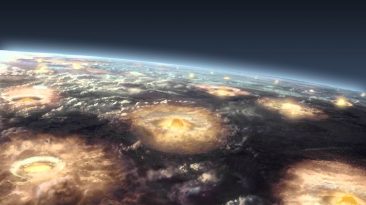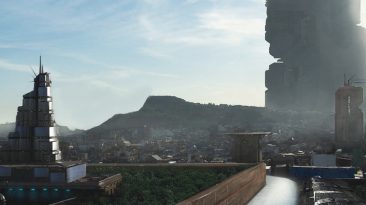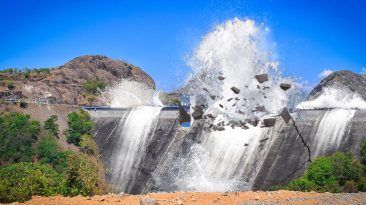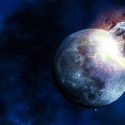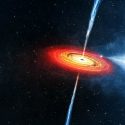Our planet has survived the billions of years of catastrophic events that made it the world we live on now. But one day, there will be an event so disastrous that it will destroy this floating rock and end the experiment known as humanity. And from the lengthy number of possibilities, we’ve narrowed our list to the top five Earth-shattering events.
Would we be sucked into an endless void? Could a second star appear and fry our planet? Or is death just waiting below Earth’s crust?
You better get to the bunker because here are the top five craziest events that could end the world. Whether it was the breakup of Pangea, or the meteor that took out the dinosaurs, Earth has been through more than one apocalyptic event. These events changed our planet’s geography while ushering in new ages for the life-forms that followed. And that’s usually been at the expense of the creatures that were already here.
But somewhere in our planet’s future lies an extinction event so devastating that it might not simply take out all of humanity, but the Earth as well. And in a matter of time, our world could return to dust. So what would it take to rip apart the Earth completely?
Stargazing can bring a sense of wonder that calms your mind. But that may be over now. Because that shooting star you spotted isn’t here to grant your wish. You may want to duck
#5. AN ASTEROID CAUSES A HYPERCANE
Hurricanes remain one of the most deadly natural events on our planet, and they leave a trail of death and destruction wherever they land. But if an asteroid hits an ocean with enough force and heat, hurricanes would be like fluff balls compared to what would come next. A big enough asteroid would superheat the oceans to over 49 °C (120 °F).
And this could set off a massive storm known as a hypercane. Winds would move as fast as the speed of sound. And clouds would reach heights up to 40 km (25 mi). The winds would shoot water and aerosols into the stratosphere, destroying the ozone layer. So even if the winds didn’t carry you into space, you could get fried by the radiation on Earth’s surface.
#4. JUPITER BECOMES A STAR
This gas giant has twice the mass of all the planets in our Solar System combined. And the gases swirling around inside Jupiter’s atmosphere are the same materials that make up the Sun. But if Jupiter became 1,000 times more massive, that distant yellow dot would wreak havoc on our planet.
With that much mass, Jupiter would turn into a star. Since this new star would be right in the middle of the Solar System, planetary bodies would change their orbits. Earth could get pulled in closer to Jupiter and get scorched by the heat coming off the former planet.
Or even worse, gravitational forces could make our world a rogue planet. That means we’d be sent away into space outside the Solar System, endlessly roaming the Universe in search of a new home. Without the heat of the Sun to keep us warm, the surface of Earth would freeze over, killing all life on our planet.
#3. THE SUN SWALLOWS THE EARTH
Maybe we shouldn’t focus on a star that hasn’t formed yet and concentrate on the one we have. After all, this ball of gas makes life possible on our planet. But since it burns through 600,000,000 tons of hydrogen every second, it’s only a matter of time before this power source is used up.
And when that occurs, the Sun’s core will become saturated with helium and begin to shrink. The increased pressure and temperature would cause the Sun to spit out massive amounts of energy. The Sun’s outer layers would expand outward, creating a deadly heatwave on Earth. Our oceans would evaporate into thin air, and the radiation would scorch the plant’s surface. Finally, the Sun, once the giver of life, would swallow up what’s left of our molten planet. And if the Sun keeps expanding, our Solar System would face a new threat. Oh man, it just keeps getting worse.
#2. EARTH GETS SUCKED INTO A BLACK HOLE
If the Sun gains even more mass before collapsing, you could witness the birth of one of the most mysterious forces in the Universe, a black hole. The product of a dying star, the gravitational pull of this void can rip apart other stars and planets.
Right now, the Sun is too small to create one of these catastrophes. But if a black hole appears in front of Earth, the uneven gravitational pull would start deforming the planet. Earthquakes and volcanic eruptions would break out all over the planet.
And as you come closer to the black hole’s event horizon, this monster might stretch out this world like a rubber band. A black hole sucks in matter by compressing it horizontally, making it look like a noodle. We call this spaghettification. Every bit of our planet would be stretched into a string of atoms and fed into this hungry void.
#1. EVERY VOLCANO EXPLODES AT ONCE
Do you think Earth’s future couldn’t get any worse? Come on. This is WHAT IF. And while the damage to our planet from a black hole would be horrific, the Earth doesn’t need gravitational forces in space to create an apocalypse. The real threat lies beneath your feet.
Right now, 10 to 20 volcanoes are erupting across our planet, spewing ash and gas into the atmosphere. But if every volcano on Earth exploded at once, you couldn’t escape the fumes and heat, no matter where you live. Rocks reaching 1,000 °C (1,830 °F) would travel as fast as 700 km/h (450 mph).
With such a massive amount of molten rock slamming onto the surface, the planet could lose its balance, and the poles could realign. A thick layer of ash and gas would suffocate Earth, and eventually they’d block all the sunlight. And while the lava cools, the temperature on Earth would drastically drop, sending us into another Ice Age. While this event wouldn’t necessarily end our entire planet, it would destroy any chance of sustaining life until those clouds clear up.
Life on Earth has ended several times before, and it’s safe to say it will happen again. Think you’re prepped for these scenarios? Let us know in the comments. Of course, we based these doomsday predictions around science and observable facts. But some things are beyond our understanding. Like, what if the real threat to our existence wasn’t miles underground? What if it was less than 2 m (6 ft) below?












